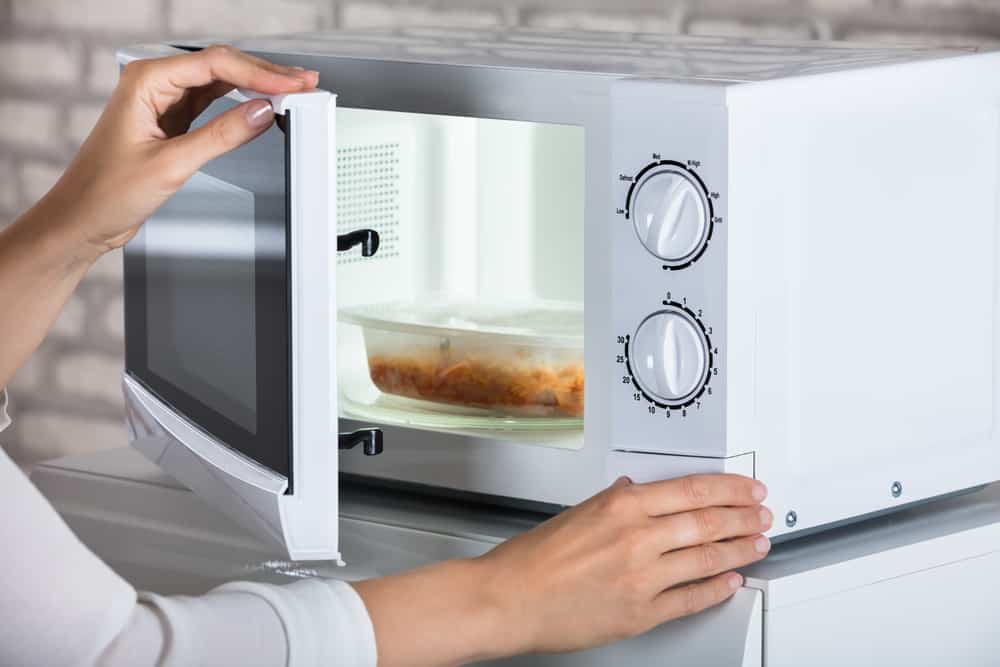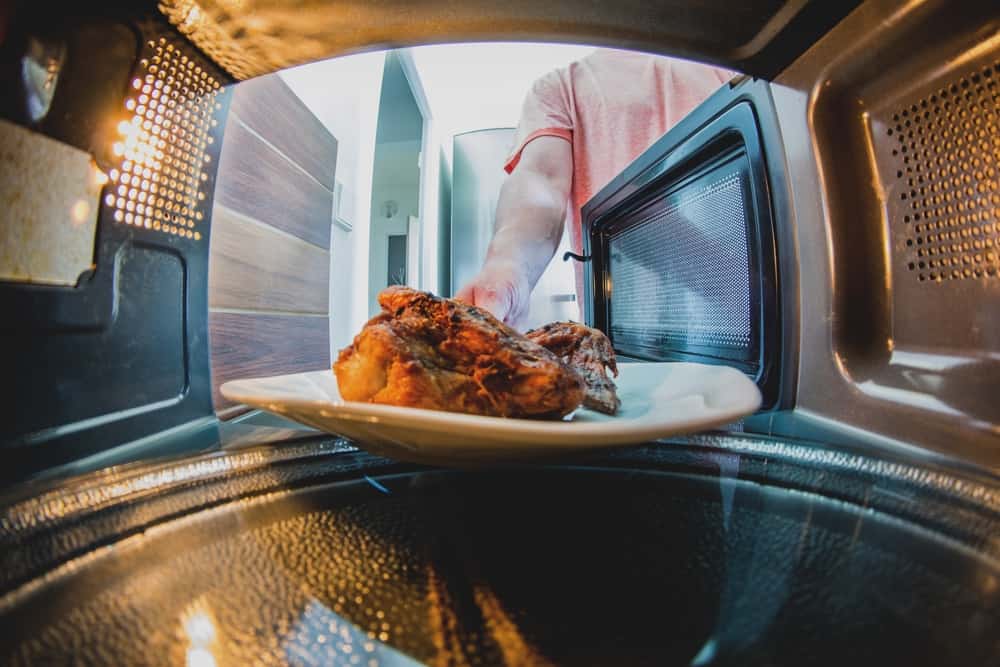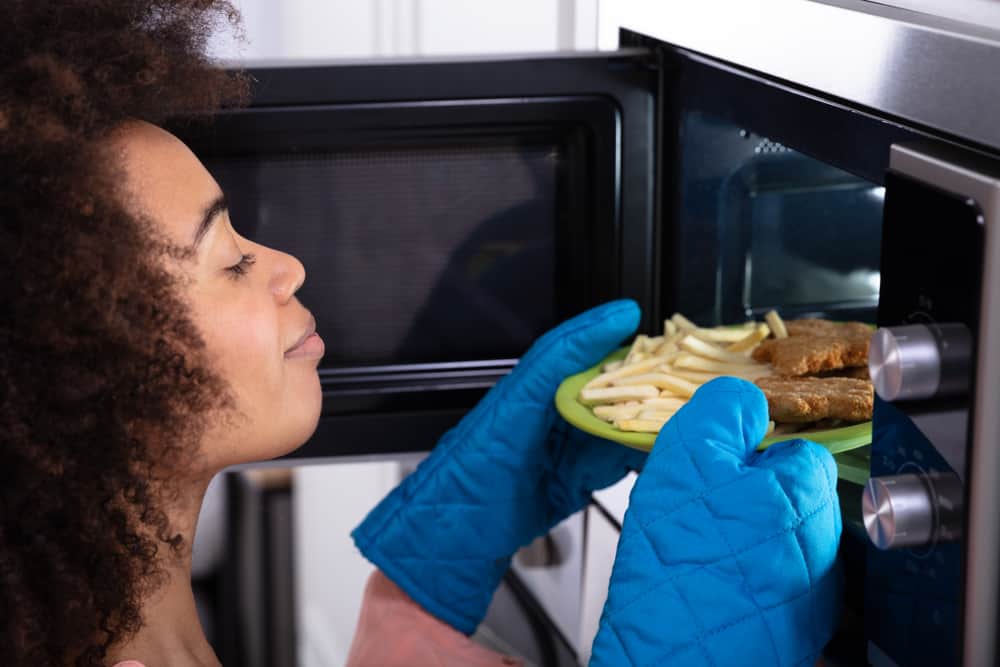No kitchen is complete without a microwave. Microwave ovens are one of the handiest and easiest to use household appliances. You can throw almost any type of food in a microwave, and just a few minutes later, it's hot and ready to eat. The convenience and speed of microwaves are without a doubt their best characteristics.
It is an appliance that saves you time and makes you hot food. What is there not to like? Many people have been using microwaves their whole lives but do not know much about them. If you want to know more about your microwave and how it works, you have come to the right place. This article has all the necessary information you need to be a microwave pro. And it answers questions such as, "Why does my microwave get hot inside?"
Before answering the question, “Why does my microwave get hot inside?” It is important to define what a microwave oven is.
What most people call a microwave is technically a microwave oven. Microwave ovens are electric appliances most commonly used in private kitchens. You may also find them in college dorm rooms, office kitchens, and lounges. You will not likely find them in a professional kitchen despite their usefulness.
People use microwaves to heat up and defrost food. Microwaves have become a popular kitchen appliance because of how quick and efficient they are. They are particularly effective at cooking foods that have high water content. Microwaves can also defrost frozen foods that would otherwise take hours to melt. Generally, you can cook things faster in a microwave than in an oven.

Microwave ovens heat much differently than regular kitchen ovens
Even though they are called microwave ovens, they have little in common with conventional ovens. Conventional ovens are powered by electricity or gas. And cook food items at high temperatures. Microwave ovens use only electricity and electromagnetic waves for cooking rather than heat.
Although microwaves may seem like magic cooking machines, they are not. They use some basic scientific principles to cook your food. Once you know these facts, it will be easy to understand, “Why does my microwave get hot inside?”
Microwaves release electromagnetic radiation. This electromagnetic radiation is on the microwave frequency. This is where microwave ovens get their name. Every microwave has a magnetron that produces and releases the microwaves. The microwaves emitted will not escape from the microwave oven. This is due to the insulation in the door and walls of the microwave. This electromagnetic radiation is one answer to, “Why does my microwave get hot inside?”
The magnetron releases microwaves into the microwave's cooking chamber. The waves will bounce around inside the room until the food absorbs them. The water molecules in food quickly absorb the microwaves. The water molecules in food absorb the microwaves rapidly. This is because water consists of polar or charged molecules.
Polar molecules have a charge on one side of the molecule. So, one side of the molecule is slightly positive, and one side is somewhat negative. When polar molecules absorb heat, they begin to move around and spin. The heating of polar molecules is known as dielectric heating. Dielectric heating is the process that occurs inside your microwave.
Water is a polar molecule, so liquids or food items with water in them will warm up quickly in a microwave. When the water molecules absorb the microwaves, they vibrate and produce thermal energy (heat). Over time, the water molecules will warm the food.
Your microwave oven may be getting hot to the touch on the outside. This heat is not a reason to be concerned. Your microwave oven will naturally produce heat from the magnetron and power transformer.
Electricity powers the magnetron in a microwave. And the microwave converts the electric power into usable energy. This conversion results in some heat loss. This heat will radiate from the microwave and into the surrounding area.
Finally, if you cook something for a long time in the microwave, the heat can transfer to the floors and walls of the microwave oven. The heat will eventually move to the surrounding area. The transfer of heat is normal and not a cause for concern.

Your microwave oven’s internal temperature will rise as the food you are cooking heats up
So, “Why does my microwave get hot inside?” It gets hot because microwaves warm up the water molecules in the food. Those water molecules release heat energy and warm up your microwave.
To answer the question, “Why does my microwave get hot inside?” It is necessary to know the microwave oven's history and background. The microwave oven has a fascinating history that begins back in the early 20th century.
As mentioned earlier, a microwave is an electromagnetic wave. It has a frequency between 300 MHz and 300 GHz. Additionally, microwaves have a wavelength between 0.001m and 0.01. Microwaves were first discovered in the 1930s in the UK. When scientists developed the first radar systems.
The electromagnetic waves could detect aircrafts at great distances and in bad weather. Scientists then realized that there were other microwave applications. And continued experimenting with them.
In 1945, Percy Spencer, an engineer at Raytheon, was working on a new radar tube design when he saw the chocolate bar in his pocket melt. Spencer was not the first person to recognize that microwaves produced heat. But he was the first to begin experimenting with them.
Spencer exposed popcorn kernels to microwaves, and they popped. He was also the first person to explode an egg in a microwave. He continued to explore the possibilities of cooking with microwaves.
The first microwave oven was produced and patented in the fall of 1945. The first commercial microwave ovens were available in 1947. But, they were expensive and were a bit dangerous. It wasn't until the 1960s that microwave ovens became safe and cheap enough for widespread use. In 1986, over 25% of American households had a microwave. By 1997, that number had risen to over 90%.
Microwaves are one of the most amazing inventions of the 20th century. And have become a modern kitchen staple.
Unlike conventional ovens, microwaves measure their power in watts rather than degrees. Microwaves can come in a variety of different wattages. Some microwaves can even adjust how much wattage or power they use. Some standard microwaves oven wattages are listed below:
- 700 watts: A standard wattage. This works well for reheating food.
- 1000 watts: This setting works for cooking food quickly.
- 1200 watts: This setting works for defrosting frozen food.
The higher the wattage, the more powerful your microwave and the faster it will cook your food. If you have a microwave oven of over 1000 watts, this may answer the question, "Why does my microwave get hot inside?" Higher wattages will make the food inside your microwave hotter.

Oven mitts are a good idea when removing food from the microwave - food, plates, and the inside of the microwave may be hot enough to burn exposed skin
There are other valuable tips to know about using your microwave for cooking food. That is, besides knowing “why my microwave gets hot inside?” And the different wattages of microwaves. Here are some tips:
